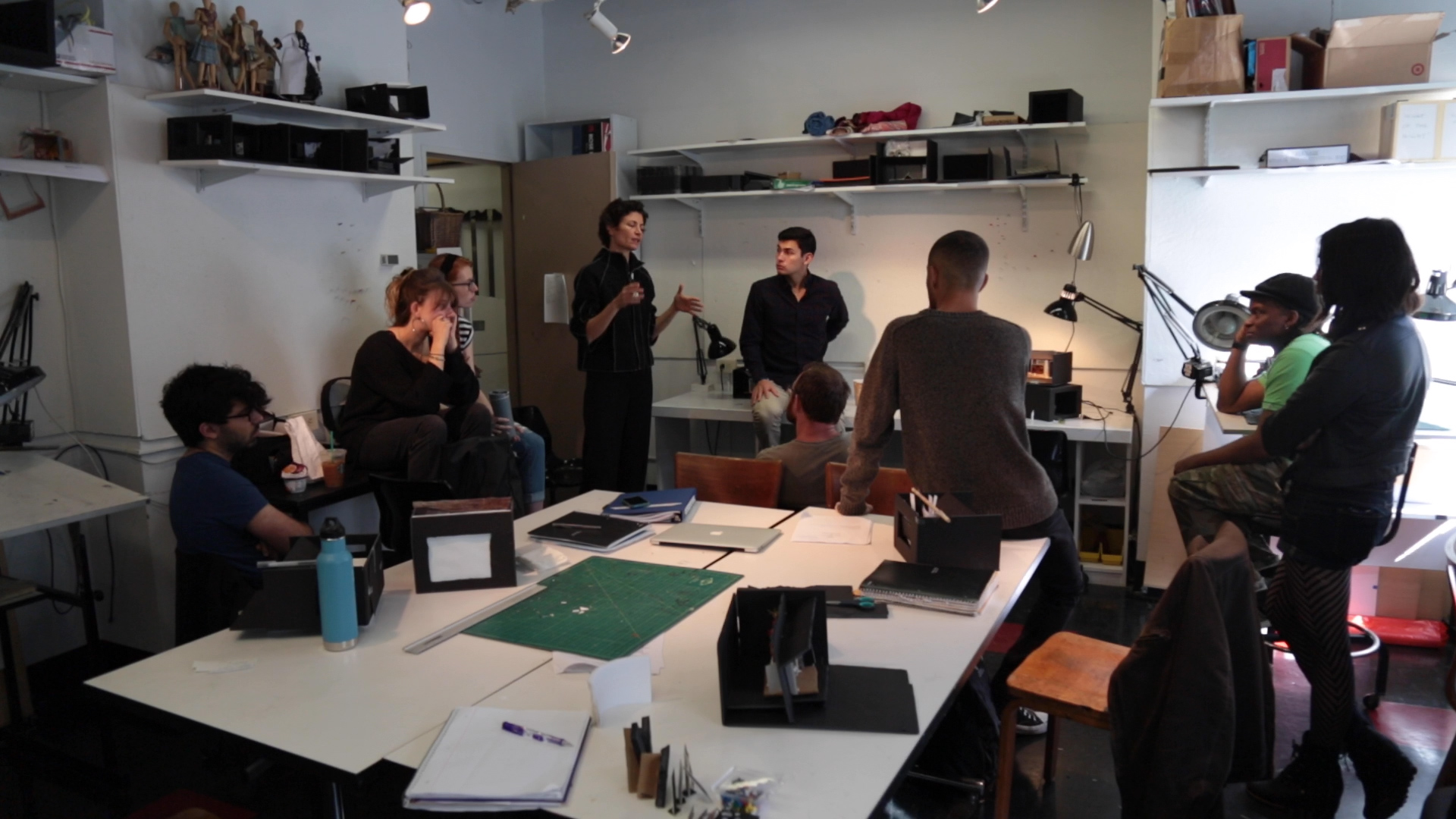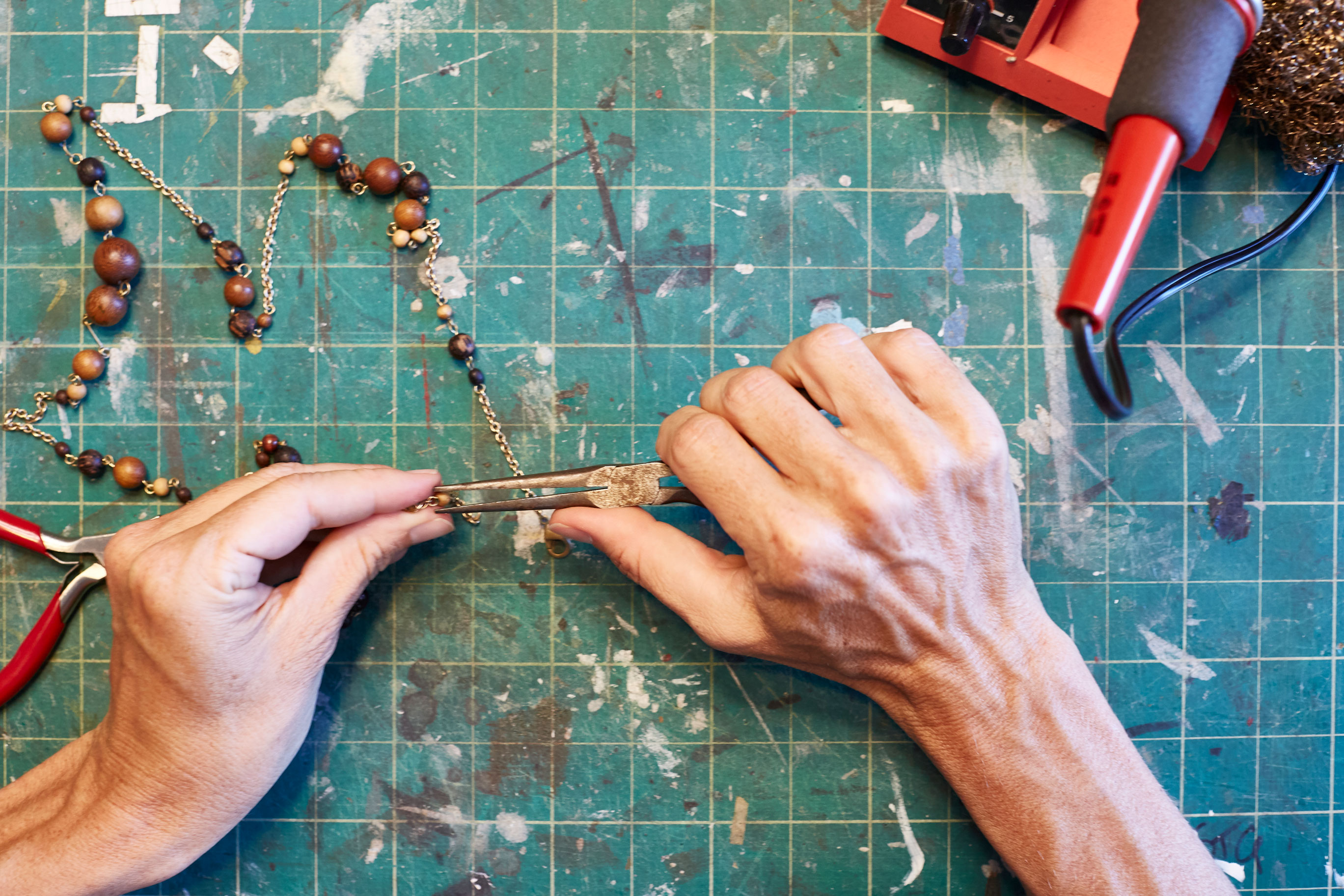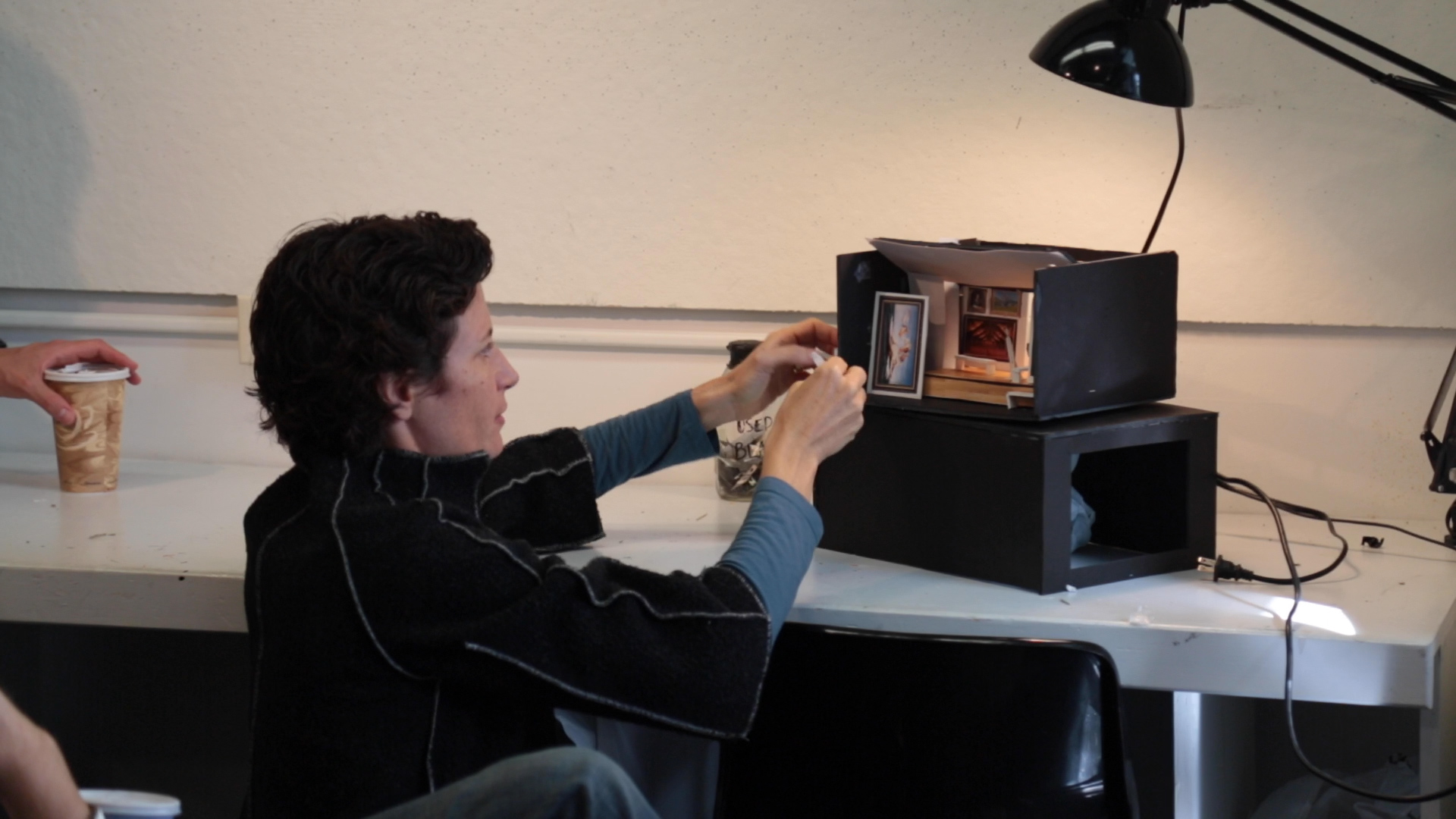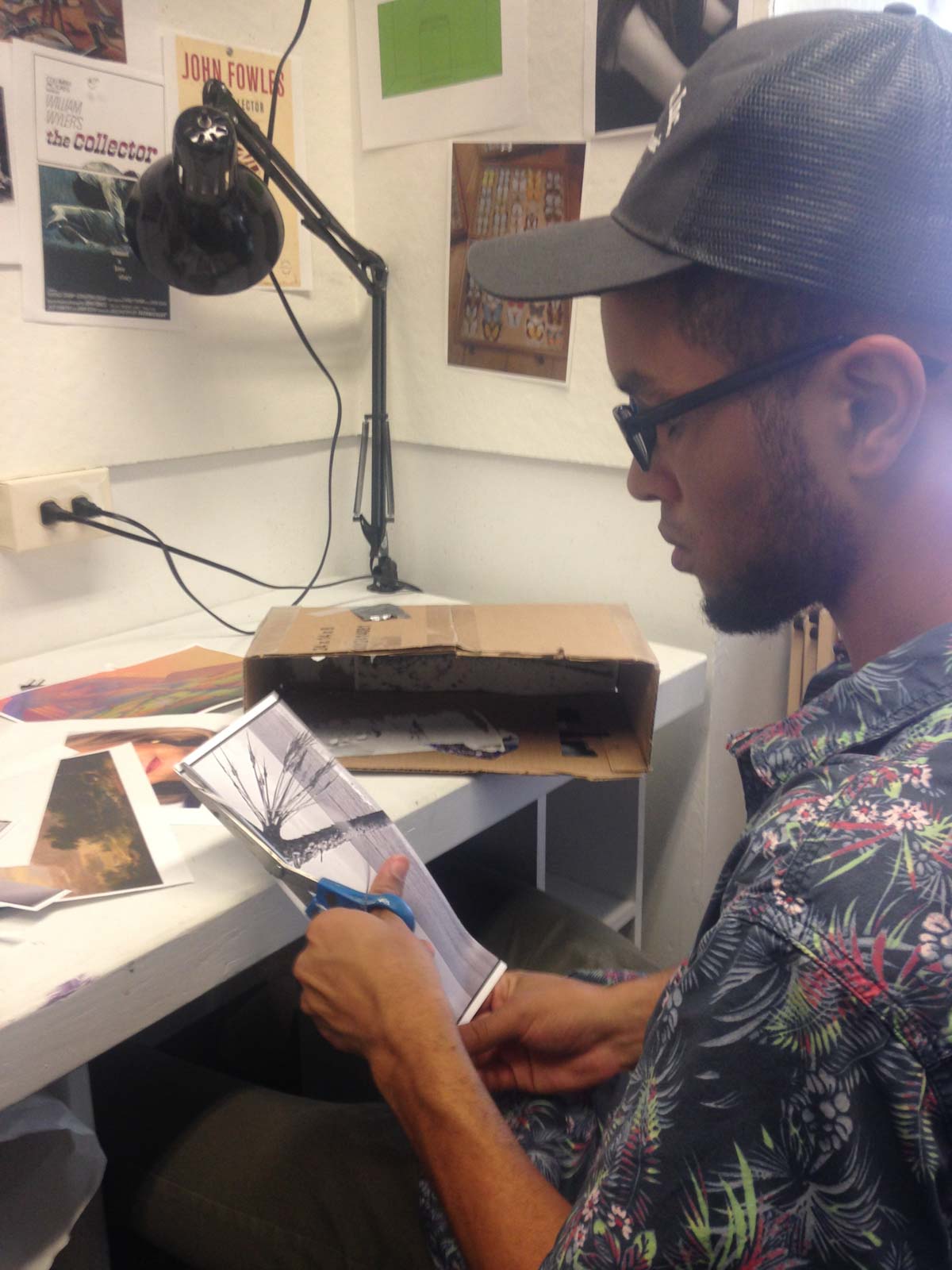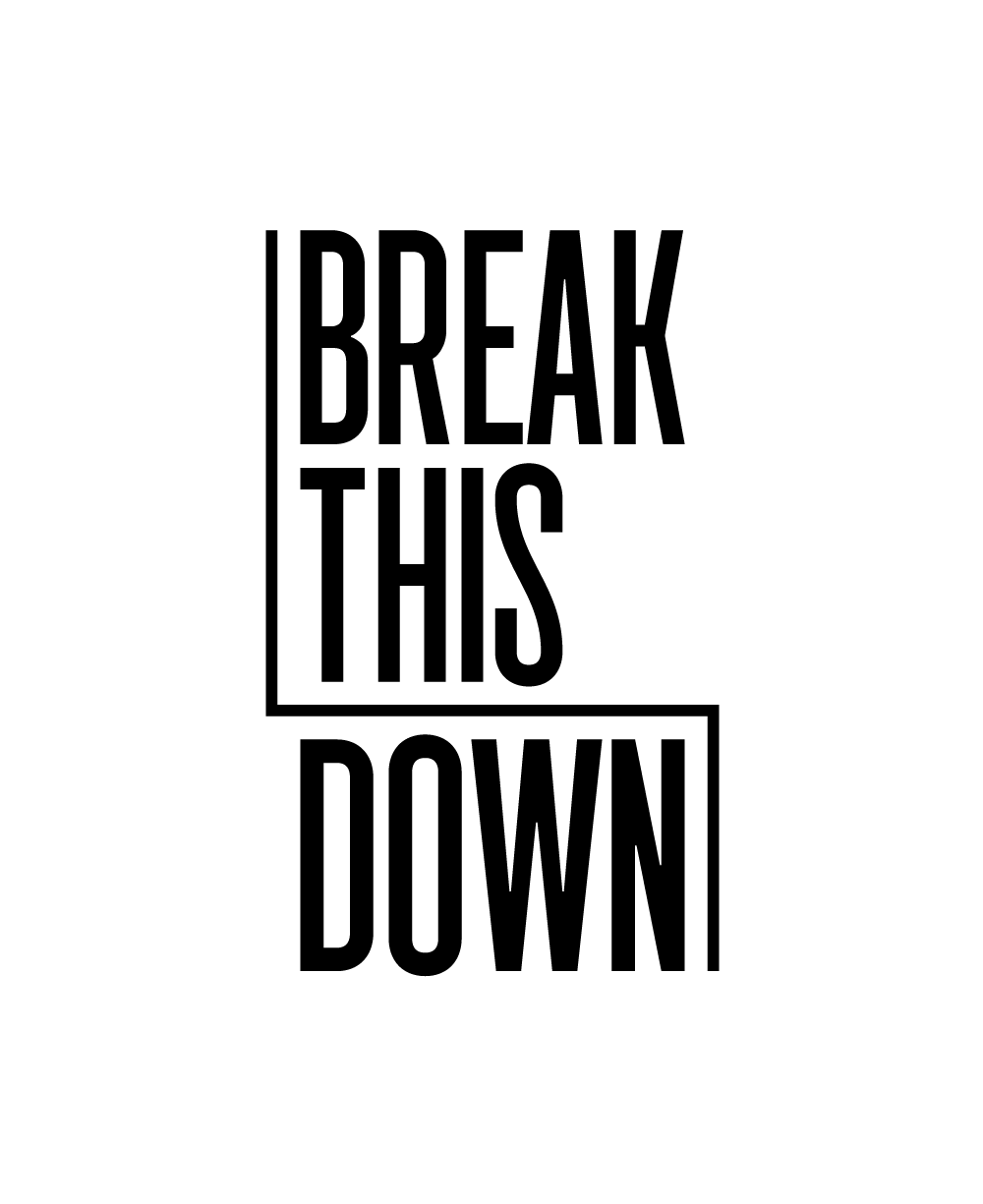Global warming patterns and the COVID-19 pandemic have highlighted the need to create more sustainable production methods, making sustainability one of the most pressing issues of today. Scientists, academics, and activists alike are grappling with the state of the nation’s systems of consumption, asking how citizens can most effectively change their habits to take better care of the environment, and how businesses can transform their business models to support these changes.
Leading the charge to strengthen Barnard’s approach to sustainability and consumption is associate professor of professional practice in theatre Sandra Goldmark, the College’s inaugural director of campus sustainability and climate action.
Seven years ago, Goldmark founded Fixup, a social enterprise focused on creating repair-and-reuse events that encourage people to create more sustainable relationships with their material goods. To date, her project has diverted over 10,000 pounds of waste from New York City’s landfills, significantly reducing emissions produced from such waste. A leader in climate action, Goldmark is also working on inventive, sustainable ways of engaging with material culture in and out of her classroom.
In her newly published book, Fixation: How to Have Stuff Without Breaking the Planet, Goldmark shares her research on consumption and how to create a more sustainable world. In this “Break This Down” interview, the theatre designer and sustainability expert discusses the inspiration behind Fixation and the importance of building a new model of consumption for individuals and businesses.
Did your sustainability work on Barnard’s campus influence how you approached writing Fixation?
I launched the whole Fixup/Fixation project with support from a Presidential Research Award more than seven years ago. Since then, I have informally used the Barnard community as a sort of design lab and sounding board: holding repair events at Founders Day, teaching a First-Year Seminar on “Things and Stuff,” and fixing broken objects for colleagues like Hilary Callahan, Robin Beltzer, Kelly King-Lewis, and many more. I even cite President Sian Leah Beilock’s research in the book, in a chapter on the kinesthetic knowledge required for repair. I’ve been able to use the support and wisdom of the Barnard community to test ideas and techniques and develop the concepts I explore in the book.
More broadly, the Barnard community has inspired me. It’s a bit of a cliché to say that as a teacher you learn more from your students than they learn from you, but it’s true. I see every day that students are ready for change, excited about fighting climate change, and passionate about shifting to a circular, regenerative, and equitable model of consumption.
How can the sustainability solutions you describe in your book apply to courses you are teaching this year?
Circular design practices are central to how I approach my classes, including scene design and costume design. Designers are the engines of consumption — and waste. Waste does not happen at the end of the life of a product; it happens during the design phase, with each decision we make about materials, about repairability, about component parts. Circularity is an ancient concept — theatres have been reusing and recycling since the Greeks! — and something we can all work consciously to bring forward in our design work, in theatre and beyond.
Why is moving away from what you describe as “throwaway culture” so important?
Our patterns of production and consumption are a key driver of environmental degradation, resource and habitat depletion, and climate change. Sometimes the climate change conversation centers on renewable energy, and while critically important, it’s unfortunately not enough. The Ellen MacArthur Foundation reports that renewable energy and energy efficiency measures alone, while crucial, won’t get us where we need to be: “These measures can only address 55% of emissions. The remaining 45% comes from producing the cars, clothes, food, and other products we use every day. These cannot be overlooked.” So, in two words, stuff matters — and Fixation tries to chart a clear path forward to a healthier model.
What is a key step toward mending our relationship with consumption?
Stuff is just like food. It comes from the bounty of the earth, we transform it with our labor, and we bring it into our homes or bodies. We can learn a lot from the food movement, which is much more advanced than what I call the “stuff movement.” In Fixation, I adapt some wisdom from food expert Michael Pollan [author of The Omnivore’s Dilemma] and outline these simple steps: Have good stuff — not too much, mostly reclaimed. Care for it. Pass it on. These steps are a way to break down the jargon-y term “circular economy” into simple, actionable steps for individuals, businesses, and policymakers. Stuff is a blessing, it shouldn’t be a burden, or toxic, or stressful. We can have stuff without breaking the planet — we just need to do it right.
Has the pandemic heightened the need for sustainable systems of consumption?
As with so many things, the pandemic has exposed fault lines and inequities in our system of consumption. We have seen the fragility of global supply chains. We have seen the most vulnerable be the most affected. And we have seen in stark relief how our society undervalues care, maintenance, and stewardship. Most care jobs — like healthcare, child care, maintenance, cleaning, and yes, repair — are performed by women and people of color for $10 less per hour than the average national hourly wage.
On a more positive note, we have also seen some shifts in consumption during the pandemic — from shifts in consumer spending to experiments in making, mending, and home crafts. But the big question is: How will COVID-19 change us? Will we use this opportunity to reconsider how we spend our money? Will we be able to redefine economic growth to include sustainable and equitable sectors like reuse, repair, and care? Rhiana Gunn-Wright, architect of the Green New Deal, said in July that “care jobs are green jobs.” When we build back, will we be able to rethink the way we define economic health so that we can grow in a way that works for everyone and protects our planet?
Read Goldmark’s new book, Fixation, to learn how to take the steps needed to answer some of her questions, and check out more insights from her below:
- Fall 2020: Welcome to Class with Professor Sandra Goldmark
- The Only Good Thing About Climate Change
- Climate Series: Sandra Goldmark (Podcast)
- Which Is Worse for the Environment: Driving or Flying?
— SOLBY LIM ’22

